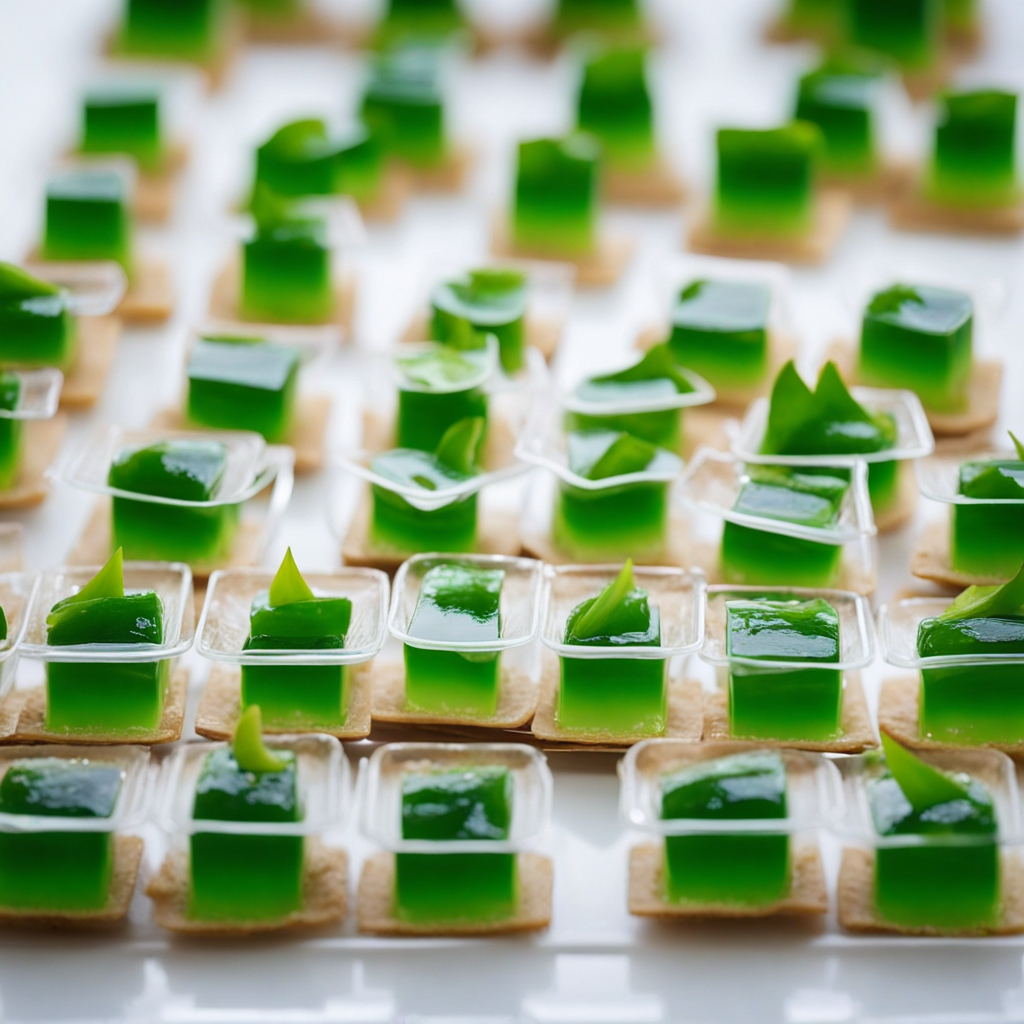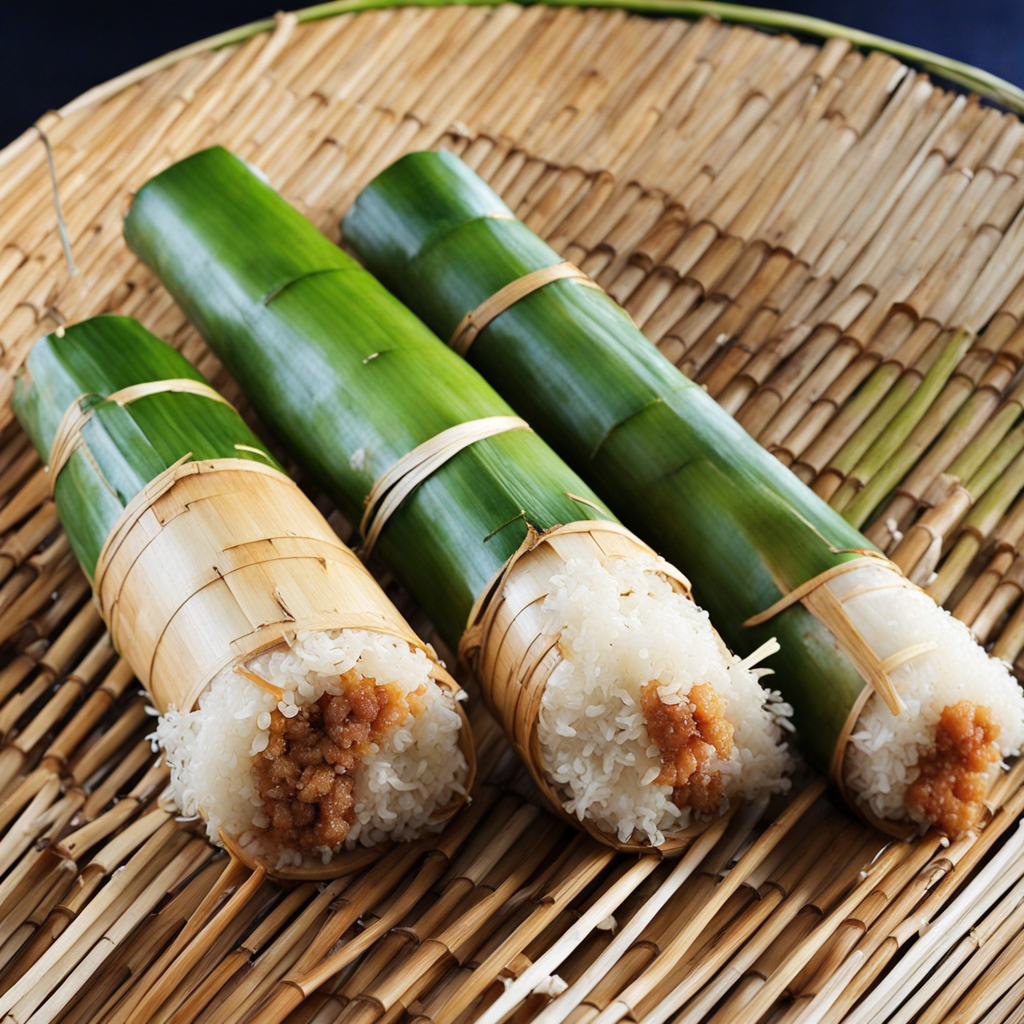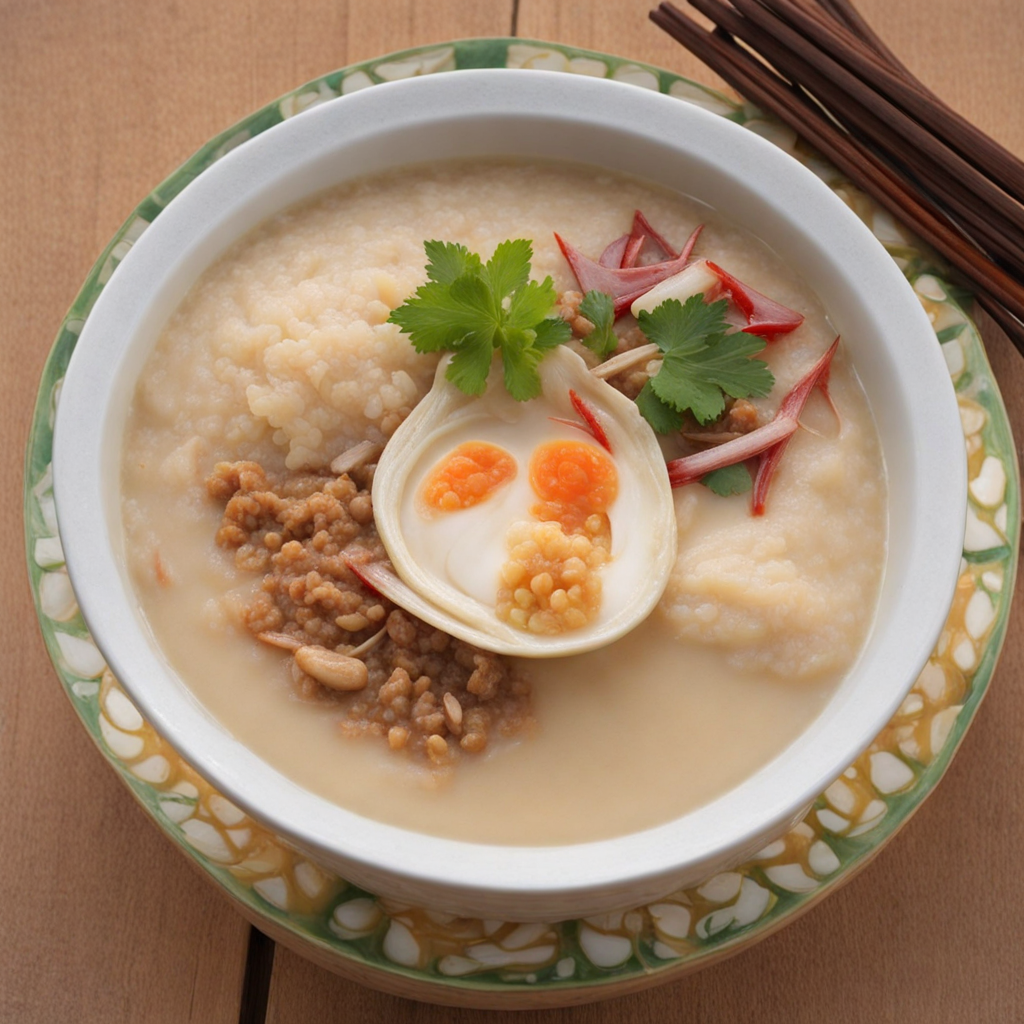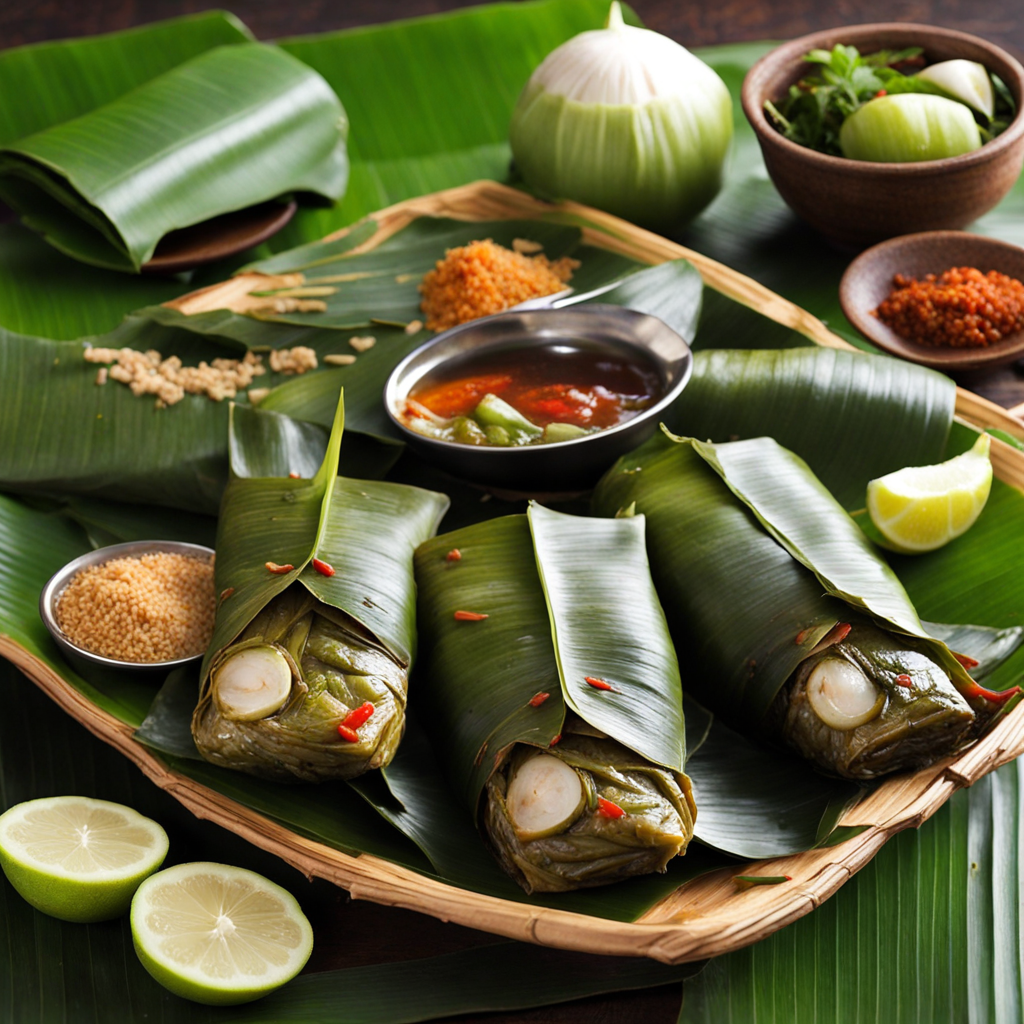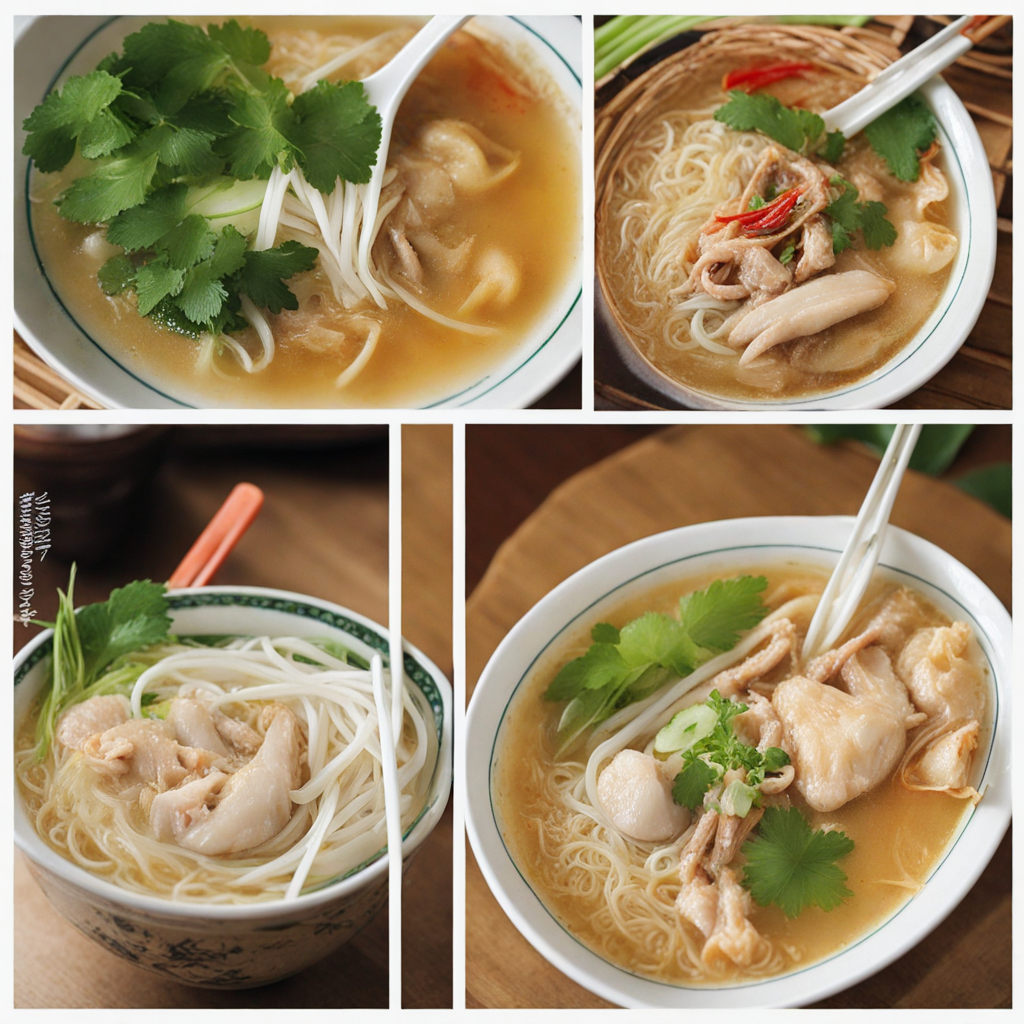Khanom Chan
Khanom Chan is a delightful traditional dessert from Laos, known for its vibrant layers and chewy texture. This beautifully crafted sweet treat is made from a combination of rice flour, coconut milk, and sugar, which creates a rich and satisfying flavor profile. Typically, you will find it presented in bright, eye-catching colors, often with shades of green, pink, and white, making it not just a treat for the palate but a feast for the eyes as well. The use of pandan leaves gives the green layers their distinct hue and a subtle, aromatic flavor that enhances the overall experience. The preparation of Khanom Chan is a labor of love, involving the careful layering of the mixture in a mold. Each layer is steamed separately, allowing the flavors to meld together while ensuring the dessert retains its unique chewy consistency. The result is a multi-layered cake that is both soft and slightly firm, providing an enjoyable bite. The interplay of the creamy coconut milk and the sweetness from the sugar creates a perfectly balanced dessert that is not overly sweet, making it a perfect accompaniment to a cup of tea or coffee. Khanom Chan is often served during special occasions and celebrations, symbolizing prosperity and good fortune. Its unique texture and flavor make it a popular choice for those looking to explore traditional Laotian cuisine. Each bite offers a taste of the culture and culinary heritage of Laos, inviting you to savor the craftsmanship and love that goes into making this beautiful dessert. Whether you're enjoying it at a local market or trying your hand at making it at home, Khanom Chan is sure to leave a lasting impression on your taste buds.
How It Became This Dish
Origin of ຂະນົມຈັນ ຂະນົມຈັນ, known as "kanom chan," is a traditional Lao dessert that has its roots in the rich culinary traditions of Southeast Asia. Its name translates to "layered cake," which reflects its distinct appearance and preparation method. The dessert is believed to have originated in Laos, drawing influence from neighboring countries, particularly Thailand and Vietnam, where similar layered desserts are popular. The use of rice flour and coconut milk as primary ingredients connects it to the broader agricultural practices of the region, where rice and coconuts are staple crops. The earliest references to layered desserts in Laos date back to the Lan Xang Kingdom in the 14th century, a time when the region began to develop its unique culinary identity. The royal courts would have likely served such delicacies during festivals and significant events, showcasing the skill of their chefs and the availability of local ingredients. As trade routes opened up, ingredients and cooking techniques from China and India also began to influence Lao cuisine, leading to the evolution of ຂະນົມຈັນ into a beloved national treat. \n\n Cultural Significance ຂະນົມຈັນ is not just a dessert; it holds a significant place in Lao culture and tradition. It is often prepared during important celebrations such as weddings, festivals, and religious ceremonies. The dessert's layers symbolize harmony and balance, reflecting the Lao belief in unity and community. Each layer, typically colored with natural dyes from pandan leaves and other local ingredients, represents different elements, often linked to auspicious meanings. During the traditional Lao New Year, or "Pi Mai," families prepare ຂະນົມຈັນ as part of their festivities. The act of making this dessert becomes a communal activity where family members gather, share stories, and bond over the preparation process. The vibrant colors of the dessert also add to the festive atmosphere, making it visually appealing and a centerpiece for any celebration. Furthermore, sharing food like ຂະນົມຈັນ reinforces familial and social ties, making it an essential part of Lao hospitality. \n\n Ingredients and Preparation The basic ingredients of ຂະນົມຈັນ include rice flour, tapioca flour, coconut milk, sugar, and natural coloring agents. The use of coconut milk gives the dessert its rich flavor and creamy texture, while the combination of rice and tapioca flour results in a chewy, gelatinous consistency. The layering process, which involves steaming the batter in a mold, is where the dessert gets its unique appearance. Each layer is typically steamed individually before adding the next, allowing for a beautifully distinct separation of colors and textures. The traditional preparation of ຂະນົມຈັນ requires patience and skill. The layers must be poured carefully, and each layer must be allowed to set before adding the next. The process can take several hours, but the result is a visually stunning cake that is as delightful to eat as it is to behold. The dessert is often cut into small squares or diamonds for serving, making it perfect for sharing during gatherings. \n\n Regional Variations While ຂະນົມຈັນ is synonymous with Lao cuisine, it has several regional variations that highlight local ingredients and flavors. In northern Laos, for example, some versions incorporate local fruits like bananas or jackfruit into the layers, adding a unique twist to the traditional recipe. In southern Laos, the dessert may feature stronger coconut flavors, reflecting the region's abundance of coconuts. Similarly, neighboring countries have their versions of layered desserts. In Thailand, the dessert known as "kanom chan" has similarities but often uses different proportions of ingredients, resulting in a slightly different taste and texture. In Vietnam, a similar dessert called "bánh da lợn" is prevalent, showcasing the shared culinary heritage of the region. These variations not only highlight local preferences but also illustrate the interconnectedness of Southeast Asian culinary traditions. \n\n Modern Adaptations In recent years, ຂະນົມຈັນ has seen a revival in popularity, both within Laos and among the Laotian diaspora around the world. With the growing interest in authentic and traditional foods, many chefs and home cooks have sought to preserve and innovate the classic recipe. Modern adaptations may include the use of alternative sweeteners or vegan substitutes, catering to contemporary dietary preferences while maintaining the essential characteristics of the dessert. Social media platforms have also played a significant role in reintroducing ຂະນົມຈັນ to a broader audience. Food bloggers and influencers showcase the dessert's preparation and presentation, inspiring others to try their hand at making it. This resurgence emphasizes the importance of preserving culinary heritage while also embracing innovation and creativity. \n\n Conclusion Overall, ຂະນົມຈັນ is a quintessential representation of Lao culture, encapsulating the essence of community, celebration, and culinary artistry. Its layered beauty, rich flavors, and cultural significance make it much more than just a dessert; it is a symbol of heritage and tradition that continues to evolve. As Laos strides into the future, the legacy of ຂະນົມຈັນ remains firmly rooted in its past, bridging generations through the simple act of sharing food.
You may like
Discover local flavors from Laos


